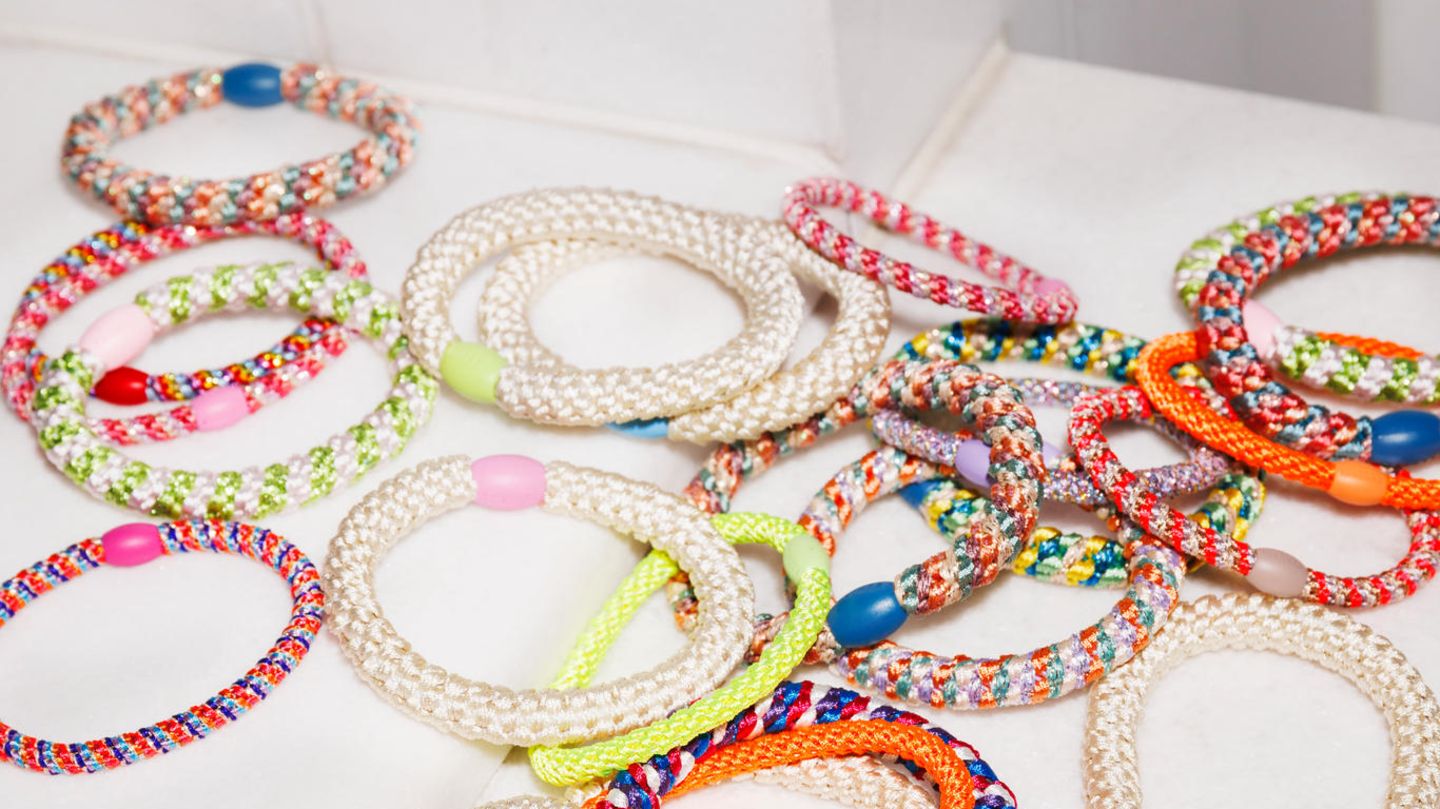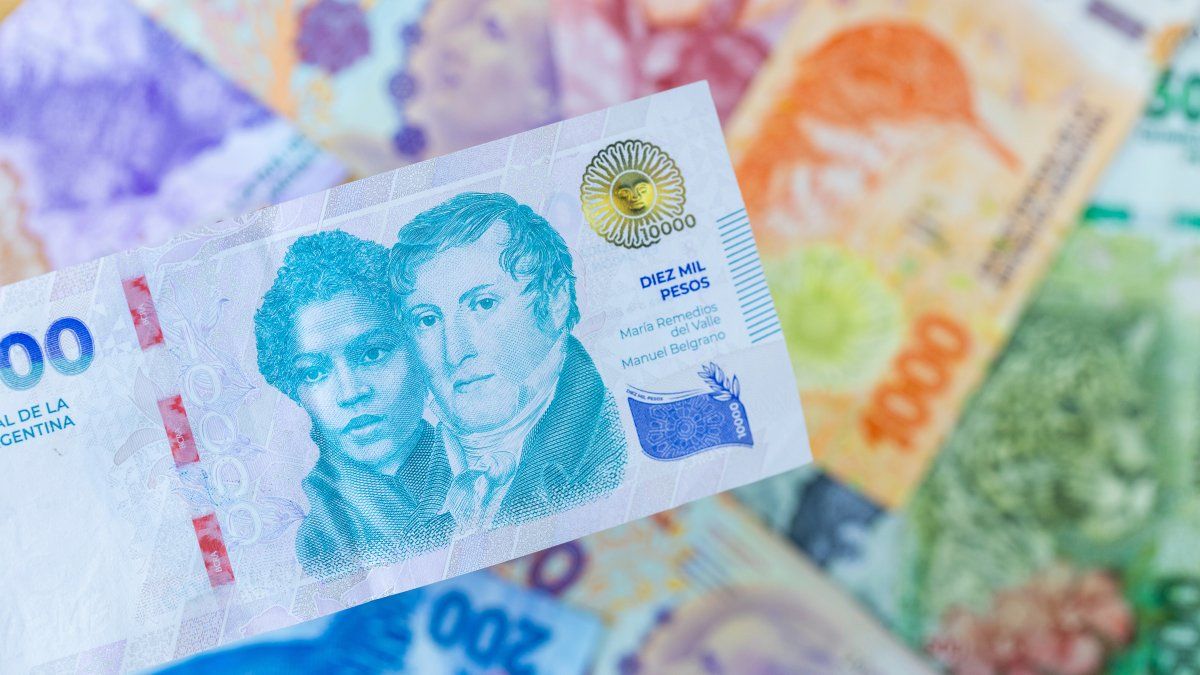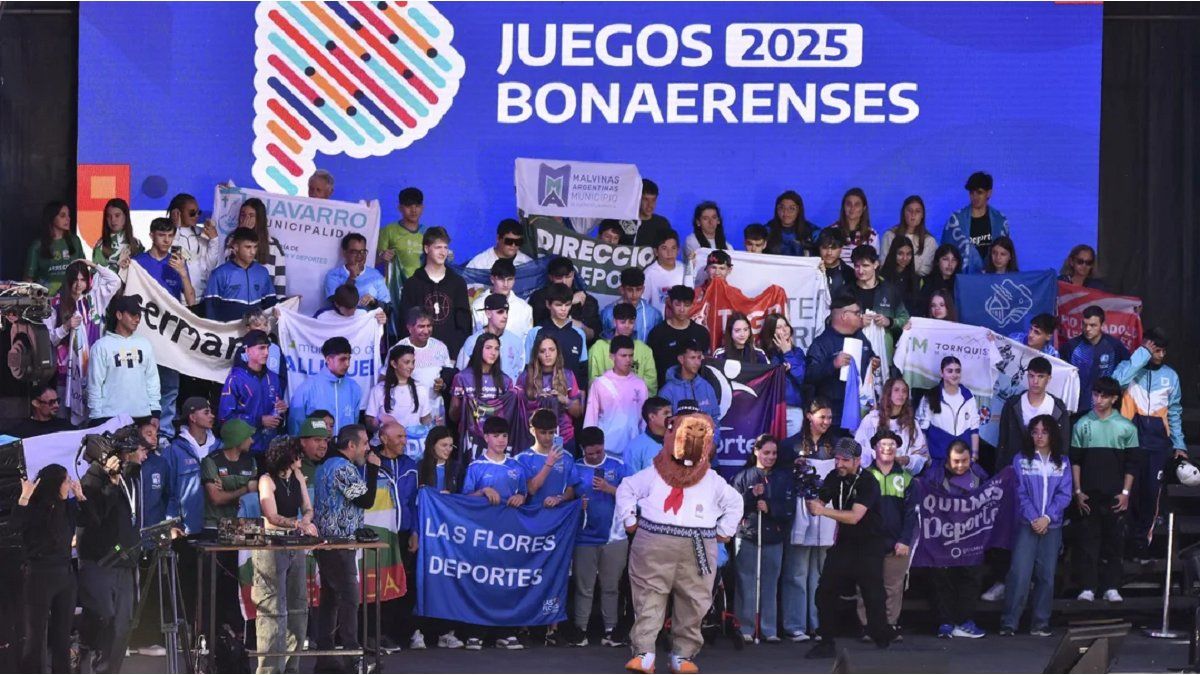They are colorful and wildly patterned: The Norwegian brand Kknekki has started a trend with its hair ties. Not only young girls use them to tame their hair, but also football stars like Erling Haaland
Finally, new colors! Two teenagers pounce on a Plexiglas box from which dozens of colored hair ties are pouring out. At first glance, they all look the same: colorful, with a striped pattern, some decorated with glitter threads. But the girls know exactly which models have just arrived at “Hello Love”, a Hamburg concept store. They deliberately pick out a neon pink one with yellow stripes, and there is also one in the German colors. The fact that both of them already wear similar hair ties in their hair and on their wrists doesn’t matter. For them, the colorful bands are what Panini pictures used to be: collector’s items that awaken the hunting instinct.
“We sell around 30,000 pieces every six months,” says Henrike Broede, manager of the Hamburg store. Although there are also decorative items and jewelry, the majority of her sales come from hair accessories such as hair ties. A single one costs between 3.50 and 4 euros. A hefty price, but her customers never seem to be able to get enough of them. However, they only have one particular brand in mind: Kknekki.
Kknekkis as collectors’ items
The name, which sounds more like gluten-free crispbread, has long since become synonymous with the colorful elastic bands. Kknekkis are considered the original; you can recognize them by their thick ribbed structure and the colorful plastic bead into which the brand name is embossed. The company comes from Norway and belongs to the family business Bon Dep, which first started selling Kknekkis in 2015. The brand has only been part of the company since 2023. “I discovered the hair ties in a small shop in a suburb of Oslo,” says CEO Vibeke Grønseth, who runs the company together with her husband Lars. “Back then, we also produced hair bands ourselves, but they always snagged, so I only wore Kknekkis.”
There are now around 550 colour combinations, as well as different thicknesses and new materials. “In Germany, neon pink is the most popular, the French prefer muted colours such as pale pink and the Norwegians, of course, navy blue,” says Grønseth. In her home country, she sells 700,000 to 800,000 hair ties a year – and that’s with a population of just 5.5 million. Worldwide, the figure is seven to eight million. Last year, Bon Dep had a turnover of around 8.3 million euros. This is expected to double in the next five years, as the company has found a prominent new investor.
Erling Haaland, Norwegian footballer and striker for Manchester City, is not only famous for his goal-scoring ability, but also for his blonde mane. And he tames it exclusively with the famous elastic bands from his homeland. “Kknekki has been my favorite hair tie for years and it is undoubtedly the best in the world,” said Haaland in the press release announcing his joining Bon Dep. He also made the new partnership public on Instagram, where he posed with a whole chain of rainbow-colored Knekkis. Together with the investment company Øgreid, the footballer and Bon Dep have big plans: They want to double sales in the next five years and conquer the international market, especially the USA.
No chance against fakes from China
In addition to Norway, Germany, Denmark, France and the Benelux countries are currently the company’s most important markets with growing sales. But the success of the hair ties has not gone unnoticed. The market has long been flooded with fakes, which can be bought both on the high street and in drugstores. Bon Dep is powerless against the counterfeits. “We may have the rights to the brand name,” says Lars Grønseth, “but how can you patent the production of a hair tie?”
In any case, hair ties are similar to jeans: each generation has its own look, which the next one buries. The same thing happened with scrunchies, the huge scrunchies that became coveted accessories because Paula Abdul, Janet Jackson and Madonna wore them in the 80s and 90s. Hillary Clinton was so obsessed with scrunchies, which in her case were mostly velvet, that she jokingly considered titling her memoirs “The Scrunchie Chronicles”. Carry Bradshaw sealed the end of this era in 2003 with her famous thesis: “No self-respecting woman ever wears a scrunchy outside of the bathroom”.
In the 2010s, the counter-trend began: hair ties were now supposed to be as invisible as possible. Instead of five square meters of silk, the braids were now held together by transparent, telephone-cable-like plastic bands. It was said that they did not leave an imprint on the hair. And they did not, but they also failed to meet one of the basic requirements of a hair tie: namely, to hold the hair together reliably.
So Gen Z is now wearing – or rather collecting – Kknekkis. At least the female part of it. Can the new investor and advertising medium Haaland inspire a male target group? Retailer Henrike Broede is skeptical. “How many men have long hair?” During the European Football Championship, some people might still reach for the colorful bands. After all, they come in all colors. Even if they are not worn as hair accessories, they are at least the perfect fan accessory as a bracelet – and all for a mere four euros.
Source: Stern
I am an author and journalist who has worked in the entertainment industry for over a decade. I currently work as a news editor at a major news website, and my focus is on covering the latest trends in entertainment. I also write occasional pieces for other outlets, and have authored two books about the entertainment industry.




